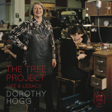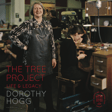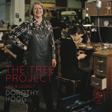
The Tree Project: Cóilín Ó Dubhghaill
Cóilín Ó Dubhghaill is a silversmith producing work that explores vessel forms through a study of process, materials and colour.
Cóilín trained at Grennan Mill craft school and Edinburgh College of Art, graduating in 1996. He subsequently worked as a designer for industry in India, the Philippines, and the UK, and set up a workshop in Kilkenny, Ireland.
In 1998, he moved to Tokyo, to study in the metalwork department at the National University of Fine Arts and Music (Tokyo Geidai), receiving a doctorate in 2005.
From 2007-2019, Cóilín worked as a Senior Research Fellow at Sheffield Hallam University. He currently lectures in the School of Design at the National College of Art and Design in Dublin.
He exhibits his work internationally and has pieces in collections including the National Museum of Ireland, the Goldsmiths’ Collection, London, and the Marzee collection, Netherlands.
During her time as Head of Jewellery & Silversmithing at Edinburgh College of Art, renowned jeweller and educator Dorothy Hogg MBE inspired students in the workshop and beyond. For more information on Dorothy Hogg, the project and participants, visit: www.scottishgoldsmithstrust.org/tree-project.
Hosted by Ebba Goring
Edited & Produced by Eda Obermanns
Cover Image by Shannon Tofts
Music: Precious Memories by Shane Ivers - https://www.silvermansound.com


